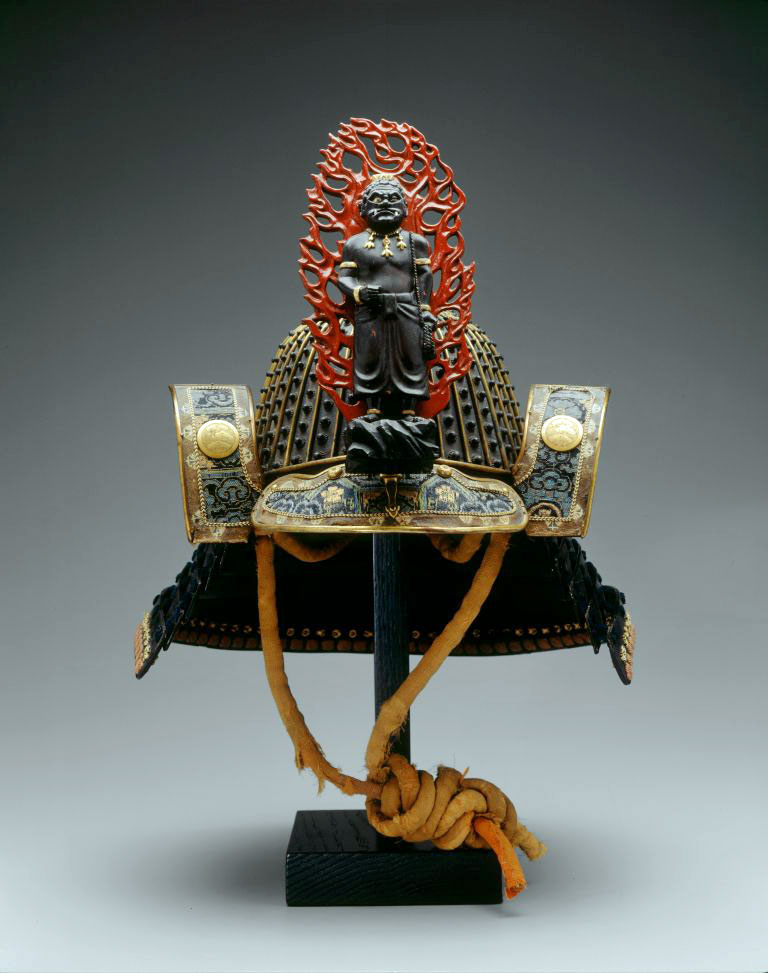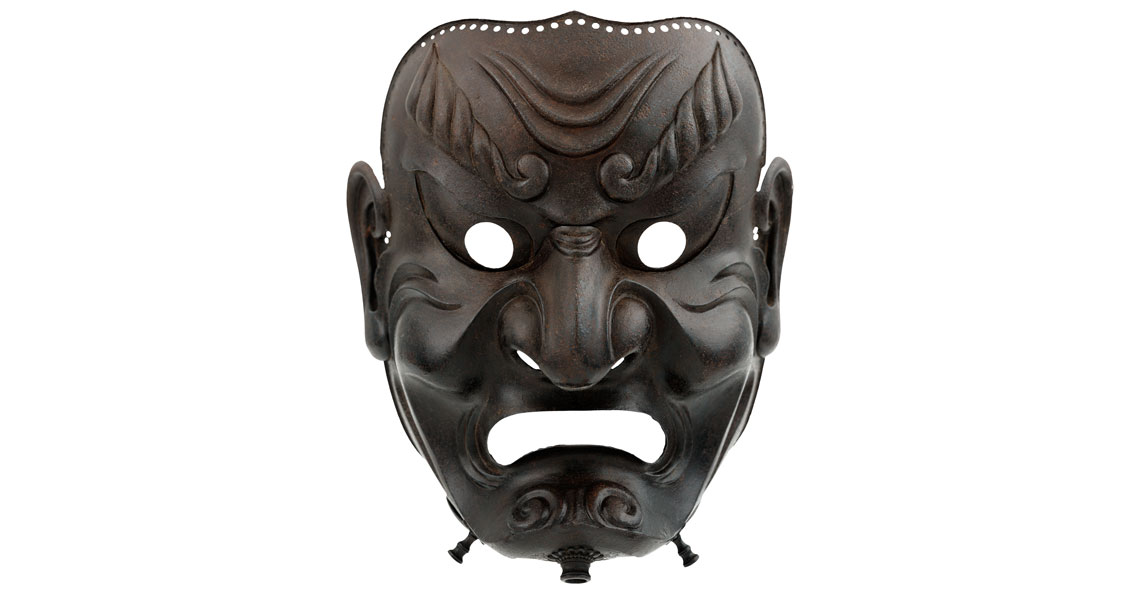The helmets, suits of armor, and weapons in Samurai: Armor from the Ann and Gabriel Barbier-Mueller Collection (on view through June 5) are exemplars of fine craftsmanship and functional protective gear. But there is another factor to these great works of art that helped shape, quite literally, the forms you see in this exhibition at the Denver Art Museum: Buddhism. Various forms of Buddhism played a major role in the life of the samurai, and we find this influence throughout several pieces on display.
Buddhism arrived in Japan during the sixth century and quickly became a powerful force for the ruling class. Though the indigenous practice of Shinto never disappeared (and, in fact many Shinto traditions merged with Buddhist ones), Buddhism and its various deity figures, rituals, and scriptures became quite influential. Pure Land Buddhism and the esoteric sects of Shingon and Tendai all contributed to the religious beliefs of the samurai.
Zen Buddhism & “the Way of the Warrior”
However, it was Zen Buddhism that best suited the warriors and complemented bushidō, the strict code of the samurai’s practice, or, “the way of the warrior.” Zen Buddhism eschewed the elaborate rituals and scriptures of Pure Land and the esoteric sects for the idea that all things are fleeting and enlightenment may be attained through spiritual and physical discipline. There was no concern for death, and this suited the samurai’s practice. The samurai must be ready to die at any moment—though the armor hopefully delayed that moment.
Protectors of the Faithful
The intense facial expression of the deity figure Agyō is found on one of the masks in the exhibition (pictured above). As you enter a Buddhist temple in Japan, you are met by two door guardians, including Agyō and his counterpart, Ungyō. These guardians are fierce—almost frightening—in their stance and stare. However, like other wrathful figures in Buddhism, these guardians are actually protectors of the faithful. The mouth on this mask appears open as if to speak the “ah” syllable associated with the guardian. The samurai who chose this facemask not only desired the protection of Agyō, but wanted to emulate the fierce deity on the battlefield.

The Flaming Jewel
While some samurai drew from Buddhist sources for their face masks, others incorporated the imagery into their helmets. This helmet appears to have flames reaching up from the sides and meeting at a point on the top. This motif references the flaming jewel in Buddhism, a common symbol referring to the wish-fulfilling properties of Buddhist practice and devotion. The samurai who chose this helmet wanted the protection of this symbol close to his body.

The 'Immovable One'
This helmet further shows Buddhist influence with its depiction of Fudō Myō-ō, the wrathful figure known as the “Immoveable One.” The samurai wanted to emulate the fierce qualities of the deity, and wearing this helmet was a helpful reminder. Like Agyō, Fudō Myō-ō’s wrath served to help, not hurt, the practitioner. The samurai believed his presence on the helmet would protect the wearer from harm.
Image at top: Full Face Mask (Sōmen) of Agyō. Signed by Myōchin Ki no Munenaga Mid-Edo period, 1710 Iron. © The Ann & Gabriel Barbier-Mueller Museum, Dallas. Photo: Brad Flowers. Samurai: Armor from the Ann and Gabriel Barbier-Mueller Collection is organized by The Ann & Gabriel Barbier-Mueller Museum, Dallas.

